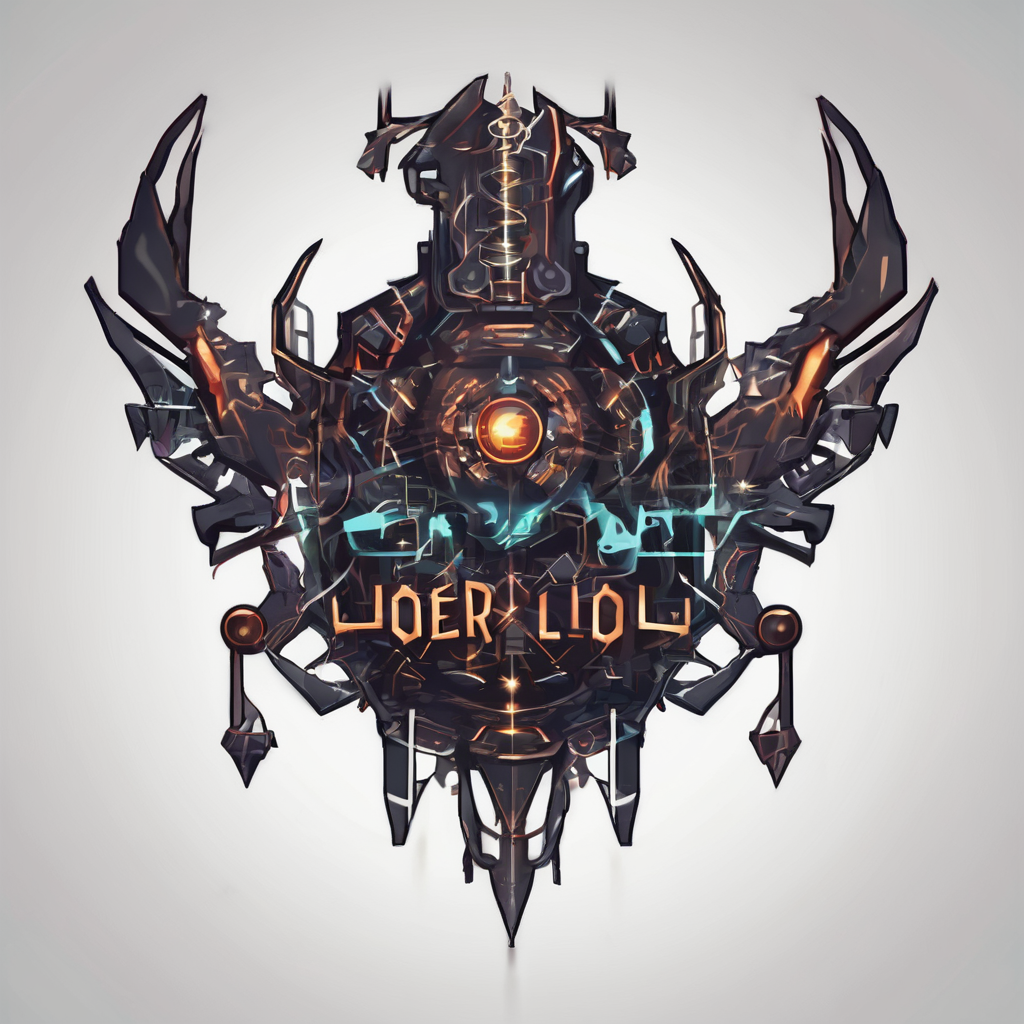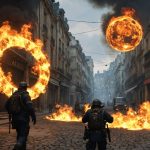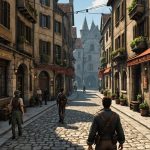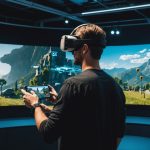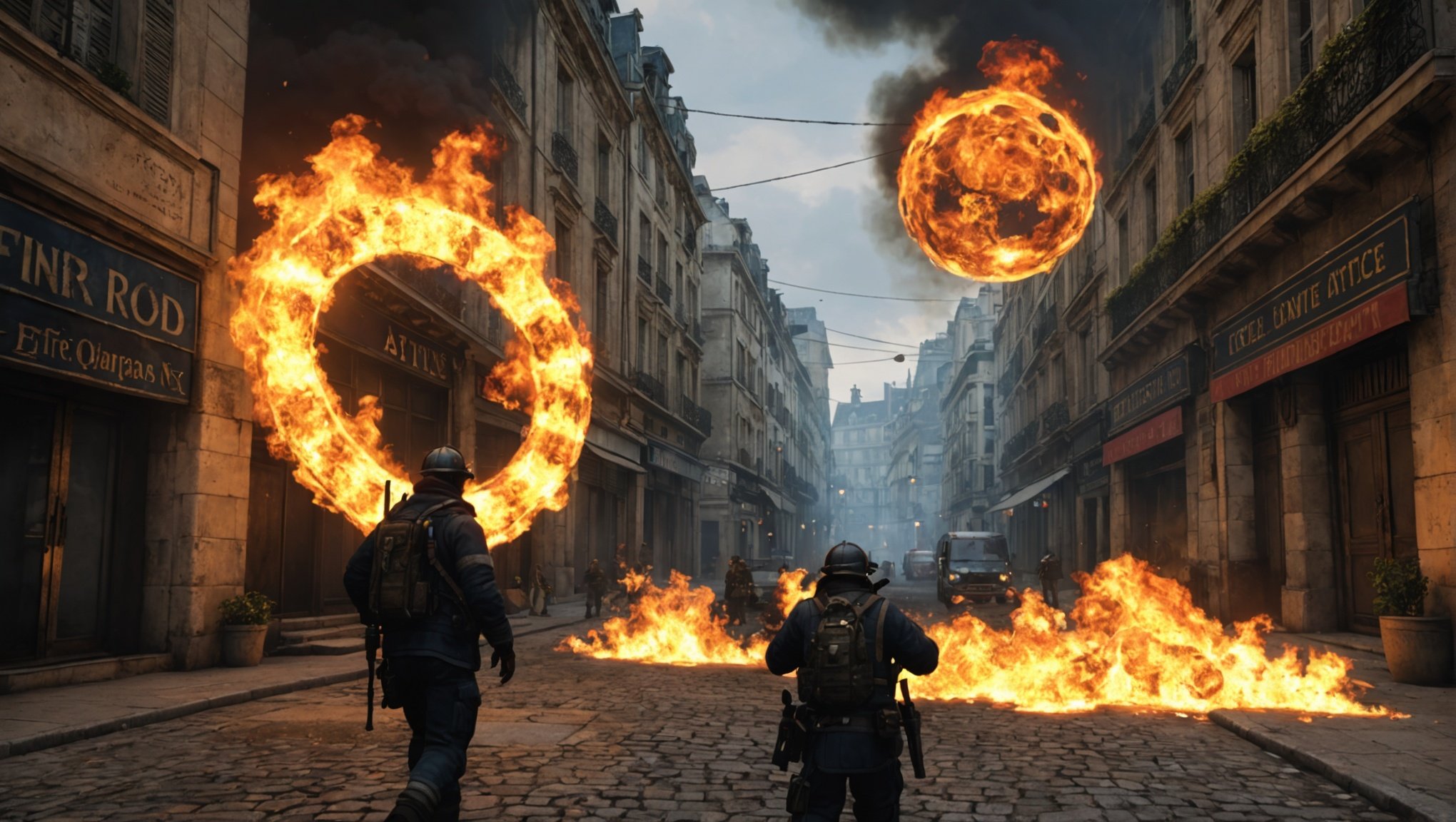Introduction
In the realm of action games, realism plays a crucial role, especially when it comes to depicting natural elements like fire. The visual immersion offered by authentic fire effects can elevate a game from ordinary to extraordinary. As game developers, you face the intriguing challenge of creating fire effects that are not only visually stunning but also dynamically interactive. This article delves into the most effective techniques for achieving lifelike fire effects, ensuring that your game stands out in a saturated market.
Particle Systems
When discussing fire effects in video games, particle systems are often the cornerstone. These systems can simulate the small particles that make up the visual appearance of fire, enabling a more vivid and dynamic presentation. The technique involves generating and manipulating a large number of tiny sprites or meshes to create a cohesive effect.
Also to read : What are the challenges of developing games for hybrid VR/AR devices?
Particle systems allow you to control various attributes like color, lifetime, velocity, and size. By tweaking these parameters, you can simulate different types of flames—whether it’s the flickering of a candle or the raging inferno of an explosion. A well-crafted particle system can adapt to various scenarios within your game, making the fire effects more versatile.
Consider incorporating noise functions to add randomness to the particle movement. This randomness mimics the chaotic nature of real fire, making your flames appear less mechanical and more organic. Integrate gradient textures to simulate the temperature variations in fire, transitioning smoothly from cool blues to scorching reds and oranges.
Also read : How can developers use AI to enhance the realism of character interactions in social simulation games?
Moreover, combining particle systems with light sources can further enhance the realism. Dynamic lighting that interacts with the environment, casting shadows and illuminating objects, adds another layer of immersion. Implementing these techniques effectively can create fire effects that are not only visually stunning but also serve to draw players deeper into the game world.
Shader Techniques
Shaders are a powerful tool for creating realistic fire effects in action games. By writing custom shaders, you can achieve the nuances and intricacies that make fire appear lifelike. Shaders operate at the hardware level, manipulating pixels and vertices to craft complex visuals.
One common approach is the fire shader technique, which leverages fragment shaders to generate per-pixel fire effects. These shaders can include various mathematical functions to simulate the motion and color variation characteristic of real fire. For instance, Perlin noise or other fractal noise algorithms can be employed to create the undulating patterns that flames exhibit.
Another essential aspect is the combustion and decay simulation. By adjusting the alpha values and color gradients over time, shaders can create the illusion of fire burning out or spreading. Combining this with additive blending modes can produce the glowing effect typical of fire, ensuring it stands out against different backgrounds.
Additionally, consider utilizing flow maps to guide the movement of your flames. Flow maps can direct the fire along pre-defined paths, making it appear as if it’s being influenced by wind or other forces. This adds an additional layer of realism, as the fire seems to react to its environment dynamically.
Integrating sub-surface scattering techniques can also enhance the visual quality of your fire effects. This technique simulates the light penetration and scattering within semi-transparent materials, such as flames, adding depth and complexity to the effect.
By mastering shader techniques, you can create fire effects that are not only visually compelling but also computationally efficient, ensuring a smooth gaming experience.
Fluid Dynamics
For those seeking the pinnacle of realism, incorporating fluid dynamics into your fire effects can be a game-changer. Fluid dynamics simulations can model the behavior of fire as a fluid, capturing the intricate details of flame movement and interaction with the environment.
Implementing fluid dynamics involves solving the Navier-Stokes equations, which describe the motion of fluid substances. This approach allows for an unparalleled level of detail, as it accounts for factors like turbulence, vorticity, and convection. The result is a fire effect that is both visually stunning and physically accurate.
One practical implementation of fluid dynamics in game development is through the use of smoke and fire simulation libraries such as NVIDIA’s Flow. These libraries provide developers with tools to create complex fire and smoke effects without delving deep into the mathematical complexities of fluid dynamics.
To enhance performance, consider using grid-based methods like Eulerian grids or Lagrangian particles. These methods can simulate fluid behavior within a defined space, allowing for real-time adjustments and interactions. Combining this with adaptive time-stepping can ensure that your simulations remain efficient, even as the complexity of the fire effect increases.
Moreover, integrating fluid dynamics with particle systems and shaders can result in a layered approach that maximizes both visual fidelity and performance. By leveraging the strengths of each technique, you can create fire effects that are both breathtakingly realistic and optimized for real-time rendering.
Real-Time Rendering Techniques
In the fast-paced world of action games, real-time rendering is essential for maintaining player immersion. Real-time rendering techniques for fire effects must balance visual quality with performance, ensuring that your game runs smoothly on a variety of hardware configurations.
One effective technique is billboarding, which involves rendering fire effects on flat planes that always face the camera. This method is computationally efficient, as it reduces the complexity of the fire effect while maintaining its visual impact. By combining billboarding with particle systems and shaders, you can create fire effects that are both realistic and performance-friendly.
Another approach is the use of volumetric rendering. This technique involves rendering fire as a 3D volume, allowing for more complex interactions with the environment. Volumetric rendering can simulate the depth and density of fire, creating a more immersive experience. However, it is more computationally intensive, so optimization techniques like level-of-detail (LOD) scaling and frustum culling are essential to maintain performance.
Integrating screen-space effects can also enhance the realism of your fire effects. Techniques such as bloom and motion blur can simulate the light scattering and dynamic movement of fire, adding an extra layer of depth to your visuals. Temporal anti-aliasing (TAA) can also improve the quality of your fire effects by reducing visual artifacts and ensuring smooth transitions.
By mastering real-time rendering techniques, you can create fire effects that are both stunning and efficient, ensuring that your action game remains engaging and immersive for players.
Conclusion
Creating realistic fire effects in action games is a multifaceted challenge that requires a combination of techniques, including particle systems, shader techniques, fluid dynamics, and real-time rendering. Each technique offers unique advantages, and by integrating them effectively, you can achieve fire effects that are both visually stunning and dynamically interactive.
Particle systems provide the foundation for fire effects, offering versatility and control. Shader techniques add depth and complexity, simulating the nuances of real fire. Fluid dynamics take realism to the next level, capturing the intricate behavior of flames. Real-time rendering techniques ensure that your fire effects are both high-quality and performance-efficient.
By mastering these techniques, you can create fire effects that elevate your action game, drawing players into a world that feels vivid and alive. The attention to detail and commitment to realism will set your game apart, ensuring a memorable and immersive experience for your audience.
